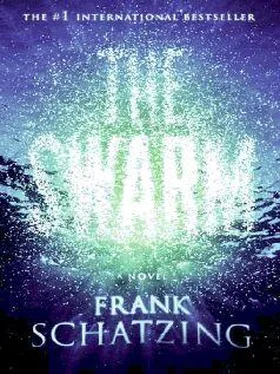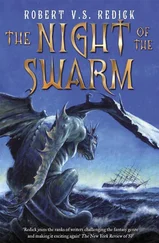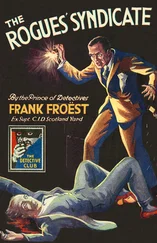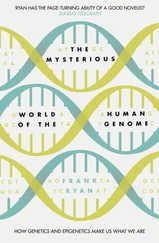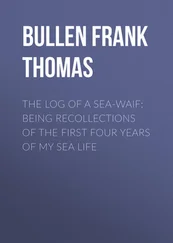'Christ, Leon.' Ford gulped some wine. 'It's like a horror movie. Go forth and kill humanity.'
Anawak didn't reply.
THAT NIGHT, as he was lying awake in his Vancouver apartment, Anawak played with the idea of tagging a whale. The creatures were still in the grip of whatever had possessed them, so if he could fit one with a transmitter and a camera, maybe it would provide them with the answers they so desperately needed.
But how could he tag a rampaging humpback, when even the calmest of whales seldom stayed still?
And there was the problem of the skin.
Tagging a whale and tagging a seal were two entirely different propositions. Seals could be caught on land while they were resting. The tag's biologically degradable adhesive would stick to the fur and dry quickly. After a set period of time it was designed to fall off. Later in the year, when the animal moulted, the last traces of glue would disappear.
But whales and dolphins didn't have coats. It was hard to imagine anything smoother than the skin of an orca or a dolphin. It felt like a freshly peeled boiled egg, and was covered with a thin layer of gel that decreased water resistance and kept out bacteria. The top layer was continually being replaced. When the animal breached, it shed its skin in long thin strips, ridding itself of parasites and tags in the process. The skin of grey whales and humpbacks was scarcely any easier to deal with.
Anawak got out of bed and felt his way to the window. His apartment was in an old block with a view of Granville Island. He gazed out at the cityscape, glittering in the night, and started to tick off the options. There were tricks he could use, of course. American scientists had taken to attaching tags and depth-time recorders with suction cups. With the help of a long pole, they could affix them to nearby whales or bow-riding dolphins without leaving the boat. But even suction cups only withstood the force of the water for a few hours at most. Other scientists had tried bolting the tags to the dorsal fins. Either way, he'd still have to approach the whale without being sunk.
Maybe he could stun it…
No, that was far too complicated. In any case, they'd need more than just a tag. They'd need pictures as well. Satellite telemetry plus video footage.
Then he had an idea. It would require a good marksman…
Anawak rushed to his desk, logged on to the web and started calling up sites. Another possibility had occurred to him, a technique he'd read about. He rummaged through a drawer, sifting through piles of notes, until he found the web address of the Underwater Robotics and Application Laboratory in Tokyo.
They'd have to cobble two methods together. The emergency committee would have to come up with the money, but right now it was prepared to do anything that might solve the problem.
He didn't fall asleep until the early hours of the morning. His last thoughts were devoted to the Barrier Queen and Clive Roberts. That was another mystery. The MD had never called back, although Anawak had chased him several times. He hoped Inglewood had at least sent the samples to Nanaimo. Where was that report? He wouldn't let them fob him off. There was so much to do.
I'll have to get up and make myself a list, he thought. Then he dozed off, utterly exhausted.
Lyons, France
Bernard Roche felt a pang of guilt for not having dealt sooner with the water samples. But how was he to know that a lobster could kill a man – and that it might kill more?
Jean Jérôme, the chef-poissonnier at Troisgros in Roanne, had failed to emerge from his coma and had died twenty-four hours after the contaminated Brittany lobster had exploded in his face. It was still impossible to say what had caused his death, but one thing was clear his body had never recovered from a severe toxic shock. There was no real proof that the lobster or, indeed, the substance found inside it – was to blame, but it certainly looked that way. Other members of the kitchen staff had been taken ill, but the worst affected was the apprentice who had put the mysterious substance in the jar. They were all suffering from dizziness, nausea and migraines, and had difficulty concentrating. It was no laughing matter, especially for Troisgros, which was in danger of closing its doors. But what really worried Roche was the number of people who had consulted their doctors with similar symptoms since Jérôme had died. Their cases weren't nearly as critical, but Roche feared the worst, especially now he knew what had happened to the water in which the lobsters had been stored.
For the sake of the restaurant, the press had tried to play down the story, but the incident was reported, and Roche was hearing rumours from elsewhere in the country. Troisgros was not the only establishment to have been affected. In Paris several people had died, allegedly from shellfish poisoning – but Roche suspected there was more to it than that. He'd heard similar news from Le Havre, Cherbourg, Caen, Rennes and Brest. One of his assistants had agreed to look into it and a story emerged in which the Brittany lobster played an unsavoury role. In the end Roche put aside his other work and devoted himself to analysing the water samples.
In no time he found yet more unusual chemicals, whose presence he couldn't explain. He needed fresh samples urgently, so he made enquiries in all the relevant cities. Regrettably no one had thought to preserve the substance. The lobster in Roanne was the only one to have exploded, but elsewhere people talked about unpalatable lobsters that they'd been forced to throw away or lobsters that had been leaking before they were cooked. If only everyone had had the presence of mind demonstrated by the apprentice at Troisgros, but Roche knew that fishermen, wholesalers and kitchen staff couldn't be expected to respond like scientists. For the time being he had to rely on speculation. In his opinion the lobster had been inhabited by two separate organisms. First there was the jelly, which had disintegrated, leaving nothing behind.
Then there was the other organism, which was very much alive and in plentiful supply. Something about it seemed ominously familiar.
He stared into his microscope.
Thousands of transparent spheres were rolling around like fast-moving tennis balls. If he was right in his assumption, inside each sphere was a coiled pedunculus – a kind of feeding tube.
Were these the organisms that had killed Jean Jérôme?
Roche reached for a sterilised needle and jabbed it into the tip of his thumb, producing a tiny droplet of blood. With great care he injected it on to the sample on the slide and looked through the lens. Magnified to seven hundred times their normal size, Roche's blood cells looked like ruby-red petals, each one packed with haemoglobin. They mingled with the water. The transparent spheres sprang into action, unfurling their tubes and falling on the human protoplasm. The peduncles entered the cells like miniature cannulae and the sinister micro-organisms took on a reddish hue as they sucked the blood cells dry. The assault on Roche's blood intensified: as soon as one cell was empty, the micro-organisms turned to the next, swelling all the time, as Roche had expected. Each could hold the content of ten cells. In less than forty-five minutes their work would be done. He watched, fascinated: the process was much faster than he'd believed.
Fifteen minutes later the frenzy was over.
Roche sat motionless next to his microscope. Then he noted, 'Query Pfiesteria piscicida !
'Query' stood for any lingering doubt, but Roche was sure that the agent responsible for the sickness and death had been identified. What truly unnerved him was that it seemed more monstrous than Pfiesteria piscicida , which made it a double superlative, since Pfiesteria was already thought to be a monster – albeit of just one hundredth of a millimetre in diameter. It was one of the smallest predators on Earth – and one of the deadliest.
Читать дальше
